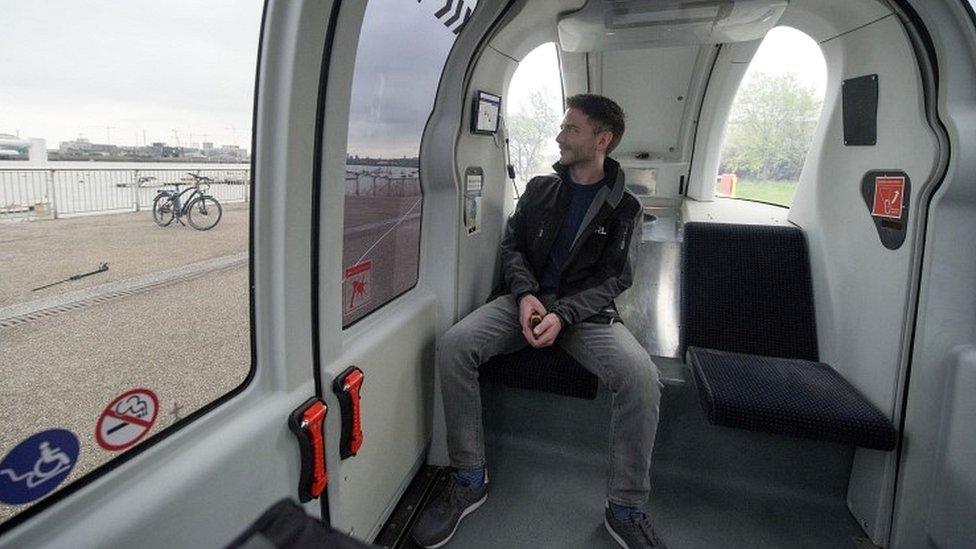Bristol Airport tests driverless pods on shared roads
- Published

The electric pods will cut the airport's carbon footprint, Capri said
Bristol Airport has begun testing driverless pods on its roads which are shared with buses, cars and pedestrians.
The Capri project has secured £4.2m to run the pilot scheme as part of its overall aim to develop the technology.
Previously, Capri has tested the pods on designated roads or sharing space with pedestrians only.
The pods will run along routes about 1,800ft (548m) long between the car park and terminal on the airport site.
Capri said the aim was to ensure the pods were safe when encountering cyclists, children and adults who may be distracted.
The electrically powered pods will also help the airport cut its carbon emissions on the ground, it added.
The airport was chosen as the pods were originally developed by Bristol firm Advanced Transport Systems.
Dr Julian Turner, chief executive of Westfield Technology which makes the pods, said: "The design came out of the local area so it's great to bring it back again.
"The vehicle will navigate, slow down if someone walks in front of it and take you to your destination."

Analysis
By Dave Harvey, BBC West Business Correspondent

Passengers will be able to use the pods between the car parks and airport terminal
They've been running driverless pods at Heathrow for a decade. So why the fuss at Bristol Airport this morning?
In short, because they'll be sharing the road. Driverless vehicles have been running successfully all over the world, but always on dedicated roads.
No human drivers to interact with, no kids running in the road, no dozy pedestrians talking on a phone and not looking at the traffic.
So-called "driverless" car experiments on public roads have so far always had an engineer in the car, clutching an emergency stop button.
Bristol Airport offers this project a perfect test bed. The short run from the long stay car parks to the terminal building is complex enough.
There will be other motorists, other buses, cyclists, and plenty of pedestrians crossing the road.
Can the new system safely navigate all these daily hazards, and still deliver people quicker to the terminal?
Driverless car engineers the world over will be watching keenly how it works.
- Published9 October 2018

- Published5 April 2017